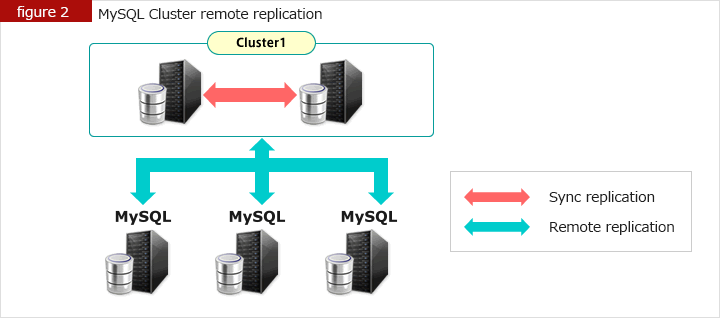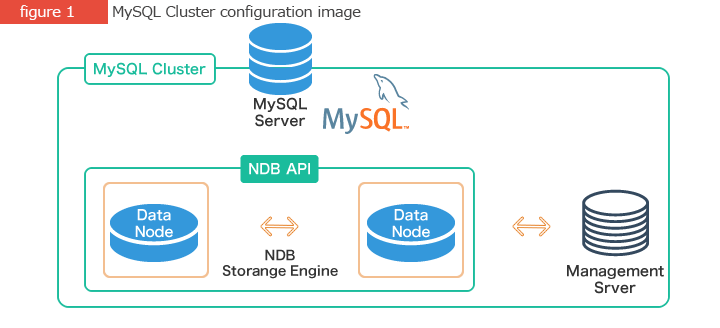MySQL Cluster Carrier Grade Edition
Overview
MySQL Cluster Carrier Grade Edition is the commercial package of the database “MySQL Cluster” that is able to configure active-active cluster architecture without using a shared disk. It includes “MySQL Cluster Manager” that simplifies clustering works as well as the support services such as consulting. (All the additional functions such as MySQL Enterprise Monitor and MySQL Enterprise Backup etc. contained in MySQL Enterprise Edition are provided as well.)
MySQL Cluster is originally different from MySQL on development base, and it was created by integrating the technology used in the subscriber database of a mobile communication system called NDB (Ericsson Network DataBase) with MySQL. Now it is the database that is able to use both NoSQL and SQL.
It enables you to configure the structures that have no single point of failure, and thanks to its high availability, MySQL Cluster Carrier Grade Edition is often used for mission critical fields such as electronic transactions and controlling systems.
Main Features
High Availability
MySQL Cluster is able to configure the structures that have no single point of failure and is designed to achieve 99.999% high availability, enabling only about 5 minutes of downtime a year.
It adopts the distributed node architecture, structured from three different nodes: “Data node” storing data, “SQL node” related to the data access by SQL, and “Management node” managing Data node and SQL node. Use the storage engine of data node for storing data, access to the data by SQL through SQL node, and the data replication is conducted. Data is guaranteed in this way.
- Rich in Node Restoration Function
- No down even during a system failure due to multiple hosts execution
- No data loss caused by node stop
- Logical data sharing through multiple processes, enabled by shared-nothing architecture
Scalability
It supports max. 255 nodes, but even if you start with less nodes, it fully exerts the clustering ability. You can scale it later as the mount of data and transactions increase.
Also, due to the technology called automatic sharding, it provides high scalability to writing processes as well as referring processes by dividing and distributing data into different servers. The sharding technology is executed transparently on applications, and the applications can connect to arbitrary nodes in the cluster. Queries are automatically connected to the correct shards.
Real Time Performance
MySQL Cluster is also suitable for applications that require real time interaction, such as online games. MySQL Cluster caches data in memory to process transaction much faster. It is in-memory, but data permanence is guaranteed.
Fail over & Recovery
In case a failure occurs in master node, other node will be a master within one second (fail over), eliminating the risk of system down time. Once a failure occurs, its self-automatic restoration, automatic restart, and automatic reconfiguration are conducted.
Though MySQL Cluster is fully prepared for failures, in order not to cause any unexpected problem, it is necessary to do node addition, database change, and maintenance of hardware and software as needed. It is also possible to do these works online without stopping systems and databases.
Remote Replication
To prevent website down, MySQL cluster allows you to have production servers in geographically separate areas and perform replication between the servers. It prevents bottle-necking by writing transaction logs asynchronously in the disk. Also, as multiple MySQL server nodes and application nodes are added, there is no problem even if it is transaction application. It provides processing ability necessary for transactions such as distributing the writing lists to all the data nodes.

Data Access
It is possible to manage data by Native C++, Java , OpenJPA, LDAP, and HTTP interface as well as SQL. In MySQL Cluster7.3, the JavaScript connector for node.js was newly added.
Low TCO (Total Cost of Ownership)
It is possible to use each operating system and hardware that is commoditized, and it can reduce the cost on introduction as it is possible to add and change nodes corresponding to the increase of environmental burdens.









